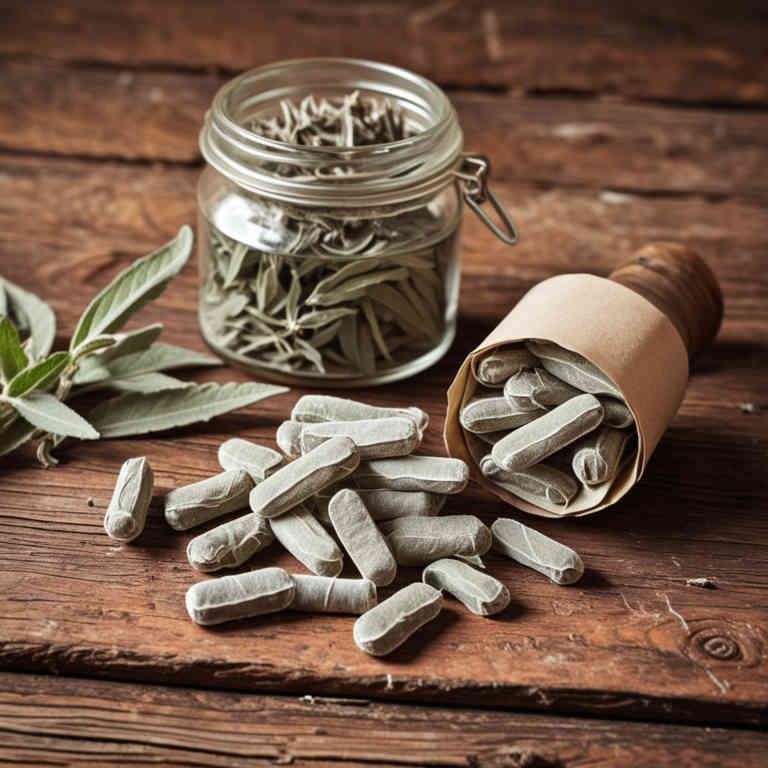Salvia officinalis lozenge for medicinal use

Salvia officinalis lozenge is a herbal preparation made from the dried leaves of the common sage plant, Salvia officinalis.
It is commonly used in herbalism to soothe sore throats and reduce inflammation in the respiratory tract. The lozenges are often flavored with honey or other natural sweeteners to enhance their palatability. Sage has been traditionally valued for its antimicrobial and anti-inflammatory properties.
This preparation is frequently recommended for colds, coughs, and as a natural remedy to improve oral hygiene.
Uses
Salvia officinalis lozenge has been used to soothe sore throats and reduce inflammation in the respiratory tract for centuries.
Historically, it was valued in ancient civilizations such as Greece and Rome for its healing properties and was often used to treat coughs and dental issues. In traditional herbal medicine, sage lozenges were also believed to have antimicrobial properties that helped prevent infections. Modern research supports these traditional uses, showing that sage can help alleviate symptoms of colds and sore throats.
Today, it remains a popular natural remedy for respiratory discomfort and is often included in over-the-counter lozenge formulations.
Benefits
Salvia officinalis lozenge has health benefits such as soothing sore throats, reducing inflammation, and improving oral hygiene.
It is commonly used to alleviate symptoms of colds and respiratory infections due to its antimicrobial and antioxidant properties. The lozenge contains compounds like rosmarinic acid and carnosic acid, which contribute to its therapeutic effects. It may also help in reducing mouth ulcers and promoting fresh breath.
Overall, it is a natural remedy that supports respiratory and oral health.
Constituents
Salvia officinalis lozenge active constituents include essential oils, flavonoids, phenolic compounds, and rosmarinic acid.
These components contribute to the lozenge's anti-inflammatory, antimicrobial, and antioxidant properties. Rosmarinic acid is particularly noted for its ability to reduce inflammation and support respiratory health. The essential oils provide a soothing effect on the throat, making it beneficial for coughs and soreness.
Overall, these constituents make Salvia officinalis lozenges a popular choice for natural remedies in supporting oral and respiratory wellness.
Preparation
To make Salvia officinalis lozenge, start by harvesting fresh or dried leaves of Salvia officinalis, also known as sage.
Wash the leaves thoroughly and chop them into small pieces to release their essential oils. Next, combine the chopped sage with a sugar syrup made by dissolving sugar in water over low heat until it reaches a thick consistency. Once the syrup has cooled slightly, mix in the sage and let the mixture steep for several hours to infuse the flavor and medicinal properties.
Finally, pour the mixture into molds or small containers and allow it to set at room temperature or in a cool place until it hardens into lozenges.
Side Effects
Salvia officinalis lozenge may lead to gastrointestinal discomfort, such as nausea or vomiting, especially when taken in high doses.
It can also cause allergic reactions in individuals sensitive to the plant, including rash, itching, or swelling. Long-term use might interfere with certain medications, particularly those affecting the blood or liver. In some cases, it may contribute to tooth discoloration due to its natural pigments.
It is important to consult a healthcare provider before use, especially for pregnant or breastfeeding women and those with chronic health conditions.